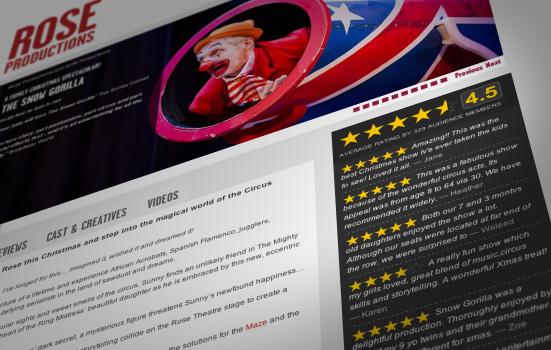Arts organisations have much to gain from actively seeking and publishing visitor feedback, according to Martin Baker.

A hush descends over an expectant theatre audience, a queue of eager visitors outside a gallery await the opening time. It can be safely said that art is nothing without observers. Yet in most organisations it feels like the only observer opinions that matter are those from a handful of professional critics, rather than the hundreds or thousands of visitors that come through the doors (“Well we do sometimes retweet them if they say something nice”).
People trust other people’s opinions and the more there are the better
In this always connected digital age, this strikes me as a curious state of affairs. Even more so when you consider that art audiences tend to be highly articulate, passionate and informed. In short, organisations that fail to connect with visitors on a daily basis are missing out on a vast opportunity. When asked by friends we have little hesitation in giving our opinion, and seem to have a voracious appetite for consuming the opinions of others. Digital technology has made it far easier to share these opinions, enabling Facebook to build an entire business model around a simple ‘Like’ button. When Twitter took off, it forced organisations to interact with visitors and drove an undeniable transformation from a one-way broadcast into a two-way conversation. In the e-commerce sector, customer ratings and reviews have revolutionised the industry right across the board from electrical goods to mobile apps and travel. The equation is very simple: verified customer ratings and comments on a product or service results in a higher conversion rate. People trust other people’s opinions and the more there are the better.
So why should the same principles not be applied to the arts? With the rise of online booking and the ever-increasing adoption of smartphones, it has never been easier, faster or more cost-effective to collect feedback on ticketed events. The major e-commerce review platforms claim completion rates of between 5 and 20%, but from working with a sample of London theatres we are seeing rates between 30 and 40%. A testament to the fact that art audiences are far more engaged with experiences than products – an important attribute that has yet to be realised to its full potential.
In some quarters there remains a historical resistance to the idea of making the opinions of visitors public. I had a surprising conversation recently with a marketing manager who told me they were happy for audiences to submit reviews, but made a conscious decision to not offer star ratings. It is interesting that they have no such reservations about publishing four and five-star ratings from professional critics. Not that I have anything against critics, they offer a different perspective and I see no reason why professional and visitor opinions cannot happily co-exist. In fact, having a wider spectrum of reviews can actually work to the organisation’s advantage.
So what are the dos and don’ts when collecting visitor opinions? Here are some:
- Do aim for volume. 222 people giving an average rating of 4.5 carries far more weight than the same rating from 22 people. The only way to maximise the volume of feedback is by proactively seeking it through email on a daily basis. Polite requests on your website to “Please leave a review” will not produce results.
- Don’t send out traditional multi-page surveys. Visitors have better things to do with their time than decide if they were ‘moderately satisfied’ or ‘satisfied’ with the friendliness of your ticketing staff. Instead, keep things simple and make the process as streamlined and fast as possible.
- Do be timely, by asking for visitor opinions when the experience is still fresh in their minds. Even a delay of a couple of days will have a negative impact on your response rate.
- Do allow for comments. Star ratings are just a starting point so give people the option to add context to their rating. In our trials we have found that two-thirds of respondents will choose to add a comment.
- Do develop a moderation policy. Potential visitors get suspicious if they only see positive comments when the overall rating may paint a different picture. By their nature, arts experiences are subjective, so showing a mix of positive and negative comments will only serve to increase trust.
We live in exciting times where customer-generated content has already transformed the marketing landscape of other industries. The arts sector is next, and now is the time to make it a part of your core strategy. Arts audiences are an adventurous bunch who time and time again demonstrate that they want to be challenged, enlightened and entertained. So, go and talk to your audience − they are one of the most valuable assets you don’t know you have.
Martin Baker is the Creator of Showbuzzness and a self-confessed theatre addict.
www.showbuzzness.com




